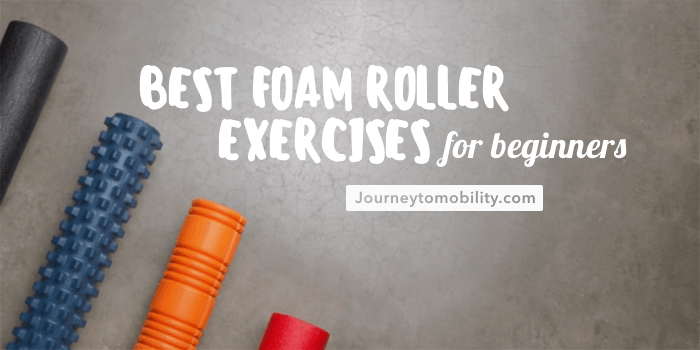There was a time when I didn’t entirely understand why people used foam rollers. The thing I actually needed to understand was why it worked and how foam rolling correctly would make my workouts a lot more effective. If someone had told it to me like that – I would have said ‘you need to tell me more’.
Now, I foam roll at least three times a week as part of my routine to help me achieve my mobility goals faster. I am all about effective workouts and learning the correct form.
How Does Foam Rolling Work?
Foam rolling is a type of self-myofascial release (SMR) or “self massage”. Releasing tight muscles help to improve the quality of your regular workouts and the cool thing is that you can feel it work. Foam rolling works by breaking up scar tissues in the muscle and knots that form in the fascia (tissues that connect tendons, bones and ligaments). As I have consistently rolled out, I actually feel less discomfort and pain when I am rolling out areas that were once really tight.

Benefits of Foam Rolling
1. Reduces Tightness
Foam rolling helps to break down scar tissues and fascia found in tight areas where your blood flow might be restricted.
2. Increases Flexibility and Joint Range of Motion
Foam rolling works by restoring the optimal length of your muscles. Exercise, injuries and life stressors result in muscle tightness which restricts your mobility and performance.
3. Reduces Pain and Muscle Soreness
When we foam roll, it activates a part of the brain that’s linked to relaxation. When activated, the brain tells our body to reduce the release of stress hormones which improves your pain tolerance so that you feel less sore. This may also improve recovery time if done after a workout.
4. Prevents Injuries
Often when we workout we feel out muscles tightening up which makes it easier to injure ourselves if a proper warm-up isn’t performed. Foam rolling helps to unlock tight tissues from the strain of exercise. Over time, your muscles will feel like they can move easier which protects you from injuries.
Foam Rolling Equipment
- Foam Roller, Trigger Point Performance ($34.99 USD)
- Massage Stick or Wooden Dowel ($31 USD)
- Therapy Peanut Ball or Double Massage Lacross Ball ($9 USD)
Best Foam Rolling Exercises For Beginners
Do 2-3 sets of foam rolling between 30-40 seconds for each muscle.
1. Thoracic Spine Extension
Target muscle groups: Back and Chest.

HOW TO: Place foam roller behind upper-mid back with both arms behind your neck as support. Gently roll up and down your back then curve your upper back down towards the ground for a full extension.
2. Hamstrings

HOW TO: Prop the back of one leg on the foam roller with arms behind you as support. The other leg should be bent to help you roll back and forth down your hamstring. Roll around areas that are most tight to release tension. Repeat on the other side.
3. Lat and Shoulders
Target muscle groups: Shoulder mobility and pain relief.

HOW TO: Roll under the armpit in a forward and back motion gently with your palm facing upward. Rotate your body downwards, pressed your opposite arm into the ground to roll out the inner and side armpit.
Conclusion
Rolling out before a workout will increase your performance and range of motion while rolling out after your workout will improve recovery. In my workout routines, I combine foam rolling (calves) with static stretching to help improve flexibility.



